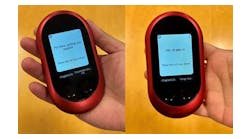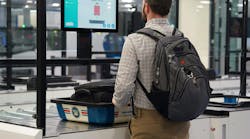March 03--Question: Now I'm really confused. I thought the Transportation Security Administration's PreCheck meant that program participants would not be subject to the normal TSA checking procedure. My wife and I used the program for the first time on a recent flight to Miami. We were granted the much shorter PreCheck line but were subjected to the normal TSA check, including the metal detector and carry-on baggage belt. The only benefit I could see was that we didn't have to take our liquids out of the carry-on, although we remained subject to the 3-ounce rule. I had assumed that, upon completion of the program and the payment, we would no longer be subject to the normal screening. That assumption proved incorrect. Can you comment on this or explain why my assumption was incorrect?
Don Brown
Long Beach
Answer: I come from a long line of literal-minded people, including a mother who, when she was preparing to enter nurses' training, was told that she needed to have an appropriate number of brassieres, so she bought nursing bras. It was probably the only time she ever saw laughter from the nuns that ran that hospital.
I understand and identify with Brown's confusion about PreCheck. It might sound as though you get a get-out-of-jail-free card, but that's not the case. Your background has been checked and presumably it won't change; the same cannot be said of your carry-on luggage.
The screening process with the TSA is like death: No one escapes it. Screeners must see your bags; you must walk through whatever security device is being used (millimeter wave machines or metal detectors).
Which brings us to the issue of managed inclusion, which Brown didn't raise but reader Cristy Clark of Seal Beach did.
First, the background: You can become a PreCheck member in three ways: Your airline invites you; you pay $100 and pass a background check as part of the Global Entry program, which gives you expedited entry back into the country and PreCheck privileges; or you pay $85 and get just the TSA PreCheck, which gives you access to airport security's fast lane.
With any of these, you don't have to remove your jacket, shoes, belt, liquids (which can't be larger than 3.4 ounces, even if you're PreCheck) or your laptop from your carry-on bag. There are exceptions to this: I was recently asked to remove my denim jacket because it looked "heavy," the TSA agent said; wearing the same jacket on the way home, I didn't have to. If your shoes have metal stays, you may set off the metal detector so you may as well remove them before you go through that model.
There is a fourth way to become a member of the PreCheck club and that is "managed inclusion," which means that you get a one-time PreCheck privilege without the background check.
Here is what TSA spokesman Ross Feinstein told me about this in an email: "Managed inclusion combines the use of multiple layers of security to indirectly conduct a real-time assessment of passengers at select airports. This initiative will operate at designated checkpoints at different times, depending on passenger volume and other variables."
I saw this firsthand on the return leg of my denim jacket trip; I whipped through security thanks to PreCheck, leaving behind the non-PreCheck hubs. It was Saturday afternoon; security was mobbed so I settled in for what I was sure would be a long wait. Before I could get comfy (does that happen at an airport?), there was the hubs, looking triumphant. He had been waved over for PreCheck. "All they did was swab my hands and send me through the millimeter wave thing," he said. The swabs are analyzed by Explosives Trace Detection machines, which TSA uses more often when randomly choosing people.
How random is random? That's not clear. He may have been assessed by a canine team (though we didn't see any) or a so-called "behavior detection officer" (didn't see any of those either, but we wouldn't have known if we had).
Clark's question centered on whether safety is jeopardized if people are chosen to be part of PreCheck when they haven't been investigated. As Feinstein has pointed out to me in the past, they and their carry-on still must be examined, and they must pass through some sort of detection, whether metal or millimeter machine.
The larger issue with managed inclusion is that people are being pulled aside; they're confused about why and they start to take off jackets, shoes etc. TSA doesn't explain why, and the selectees are left to ponder the why and the what. As long as they're just ruminating and not clogging up the shorter line, that's not a problem. But judging from the mail I receive (and my own observation), they do clog the line because they don't know how they got there or what's expected of them.
I have no gripe with the fact that they're getting a free pass. They won't always get it, whereas those of us with PreCheck will most often get it. What I do have a gripe with is that TSA has done a less-than-stellar job of managing the explanation of that inclusion.
Feinstein has told me in the past that the PreCheck process will eventually be like the FasTrak process used for expedited freeway lanes: It's a matter of time before people figure it out. The comparison is slightly off, to my mind; no one is randomly choosing my car to suddenly get "life-in-the-fast-lane" privileges. Think of the 110 if it were. Or not. There are some things that are too ghastly to consider, and that may include chaos and confusion that trumps even airport security.
Have a travel dilemma? Write to [email protected]. We regret we cannot answer every inquiry.
Copyright 2014 - Los Angeles Times


